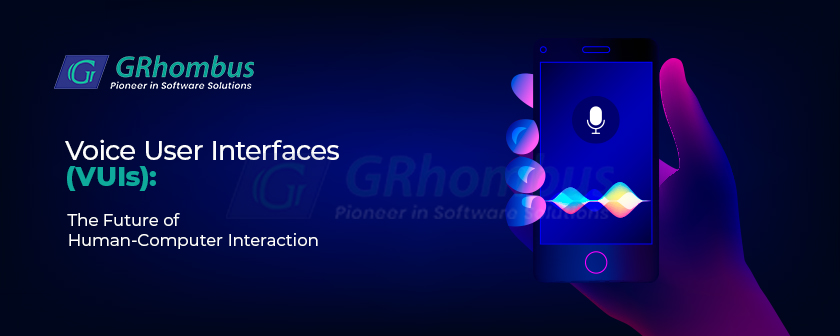In an era where technology is advancing at an unprecedented pace, Voice User Interfaces (VUIs) are emerging as a pivotal innovation, shaping the future of human-computer interaction. GRhombus Technologies stands at the forefront of this revolution, integrating VUI capabilities into our solutions to enhance user experiences and streamline interactions.
The Emergence of VUIs
Voice User Interfaces are not merely a trend; they represent a significant shift in how we interact with technology. VUIs allow users to communicate with systems through voice commands, making interactions more intuitive, natural, and efficient. This evolution marks a departure from traditional graphical user interfaces (GUIs), offering a more accessible and inclusive mode of interaction that transcends the barriers of literacy, age, and technical proficiency.
The Advantages of VUIs
VUIs offer several key benefits that underscore their potential to redefine human-computer interaction:
- Accessibility: By enabling voice-based interactions, VUIs make technology more accessible to people with disabilities, the elderly, and those who are not proficient in reading or typing.
- Convenience: VUIs simplify user interactions, making it easier to perform tasks and access information without the need for screens or physical inputs.
- Efficiency: Voice commands can often be executed faster than their manual counterparts, improving operational efficiency and user satisfaction.
- Natural Interaction: VUIs leverage natural language processing (NLP), allowing users to interact with technology in a more human-like manner, fostering a more intuitive and engaging user experience.
Components and Working of a Voice User Interface
The architecture of a Voice User Interface (VUI) is underpinned by several critical components that work in unison to interpret and respond to user commands. At its core, a VUI comprises an Automatic Speech Recognition (ASR) system, which converts spoken language into text. This text is then processed by Natural Language Understanding (NLU) algorithms to discern user intent. Subsequently, a Dialogue Management system formulates an appropriate response based on this intent, which is transformed into spoken words by a Text-to-Speech (TTS) engine, completing the interaction cycle. These components, integrated with robust AI and machine learning capabilities, enable VUIs to deliver increasingly sophisticated and contextually aware interactions.
Design Principles for Effective VUI
Designing an effective Voice User Interface (VUI) necessitates adherence to key principles that ensure intuitive and user-friendly interactions. Firstly, a VUI should be designed for conversational clarity, using natural language and accommodating varied speech patterns. Consistency in responses and the ability to handle ambiguous or incomplete commands are crucial for maintaining user trust and engagement. The VUI should offer contextual assistance and prompt feedback to guide users through interactions, ensuring they feel heard and understood. Additionally, ensuring privacy and data security is paramount, as users must trust the system with their voice inputs. Adhering to these principles, designers can create VUIs that are not only functional but also delightful to use.
Benefits of VUIs: Transforming the User Experience
Voice User Interfaces (VUIs) are transforming the user experience by offering an intuitive, hands-free mode of interaction that caters to a broad demographic spectrum. They significantly enhance accessibility, enabling users with visual impairments or motor limitations to interact with technology effortlessly. VUIs streamline complex tasks, allowing users to execute commands or access information with simple voice prompts, thereby enhancing efficiency and productivity. Moreover, VUIs are revolutionizing user engagement by providing a more personal and natural interaction mode, fostering a deeper connection between users and technology. By transforming the way we interact with devices and systems, VUIs are setting new benchmarks for convenience, accessibility, and user-centric design.
The Future of VUIs
As VUI technology continues to evolve, its potential applications are boundless. From smart homes and vehicles to healthcare and customer service, VUIs are poised to transform various industries, making technology more accessible and intuitive for everyone.
Voice User Interfaces represent a transformative shift in the landscape of human-computer interaction, offering a more natural, efficient, and inclusive way for users to engage with technology. GRhombus Technologies is at the cutting edge of this evolution, developing VUI-powered solutions that pave the way for a more connected and user-centric future.



